Embrace Foundation Archives

CURRENT - 2012
TRAVEL AS AN INTERFAITH ACT
LEBANON, ETHIOPIA, OMAN & UAE - 2012
The Embrace Founders have just returned from a nine week trip to Lebanon, Ethiopia, Oman & UAE

Tyre (Sour), South Lebanon
The purpose of the trip was:
1.) To meet with religious leaders, spiritual leaders and scholars throughout these countries.
2.)To encourage grassroots interest in organizing intercultural and interfaith events in their respective communities
3.) To photograph as a record, places considered sacred by the people living in these countries.
4.) To photograph precious anthropological/ archeological sites that are vulnerable to war.
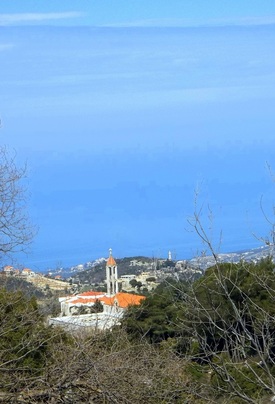
Lebanon was critical to this trip as in 2010 the founders were unable to
photograph many places of interest due to inclement weather. This time
they were able to take photographs of ruins in Tyre (Sour) in the South
of Lebanon, in Byblos North of Beirut and the Shrine of Saint Charbel
high in the mountains. Saint Charbel was of particular interest, as both
Maronite Catholic Christians and many in the local Muslim community
revere him. At the time of St. Charbel’s death both Christians and Shia
Muslims from surrounding villages arrived at the monastery to grieve
and pay their respects.
St. Charbel was a hermit and reputedly meditated on the “Light” of the
Divine (“Nur”) as one of his primary practices. When he died, his cell
was infused with light. (St. Charbel’s cell was without
electricity,batteries or gas lights.) Since his death many healings have
been attributed to him from around the world.
St. Charbel Monastery, Lebanon

n 2010, we were able to photograph the zawiya (khanka) of the
16th century Islamic Saint Mohamed ibn Iraq al-Dimashqi in
Beirut. Miracles are attached to his site. This time when we went
back we found that a bunch of yellow flowers had sprung from
the base of the dome. As yellow traditionally indicates both
intelligence and friendship, we took this as a inspired sign of
peace for Lebanon.
Saint Mohamed ibn Iraq al-Dimashqi's zawiya, Lebanon
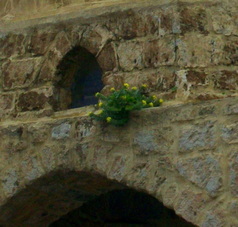
The respect that the founders of Embrace have for all the people in
Lebanon is great. The Lebanese have had to overcome incredible hardship
and yet have continued integrating large numbers of refugees for years into
their country with as much grace as their political system infested with
wasta will allow.
Palestinian grandmothers give strength to broken families in the South of Lebanon after losing their homes, land and most of their belongings -
some times more than once. Still the the vast majority of Lebanese manage to live without resentment and create beauty where ever it is
possible. As Ajata observed, the differences between people in Lebanon and especially Beirut is not between Christian, Druz, Sunni and Shia,
it is between the enormously wealthy, the diminishing middle class and the increasing numbers of less advantaged.
ETHIOPIA
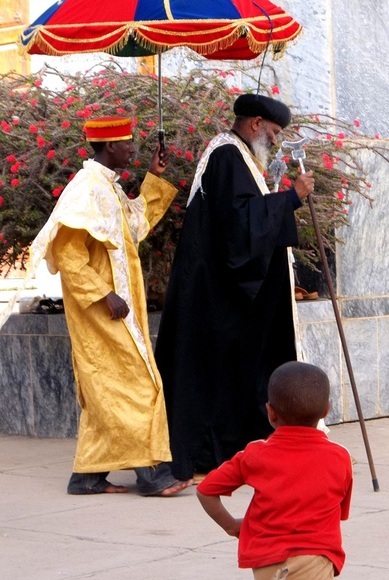
It is the people of Ethiopia that give the country its charm, dignity and make it special.
Falasha, or Ethiopian Jews are fascinating and practice a unique form of Judaism
which reflects very ancient Jewish traditions established prior to the introduction of the
Talmud (or Rabbinic Judaism.) The Falasha believe that the Ethiopian Queen of Sheba
had a child by King Solomon of the Tanakh (Old Testament) and that this son brought
the Covenant of the Ark from Israel to Ethiopia. This belief is also the basis for
Ethiopia’s singularly devout and compelling Orthodox Christianity. Despite past history,
the strong historical, cultural and emotional link between Ethiopian Jews and Christians
can not be discounted. There is evidence in many places we visited, that Ethiopian
Jews are being welcomed in their return from Israel and that some are setting up
businesses and homes once again in Ethiopia. This can no doubt only enrich Ethiopia’s
elegant tapestry of humanity. Perhaps some day we will once again see the unique,
one of a kind, Tukal Temples rebuilt in Gondar and Bahir Dar.
Lent Procession Around the Mariyum of Zion Cathedral
Axum, Ethiopia
Axum, Ethiopia
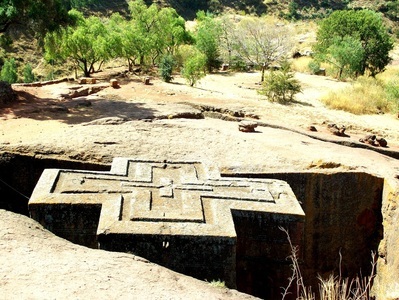
St. George's Rock Cathedral -Lallibella, Ethiopia

Ethiopia’s world heritage religious sites are profound, as are many of
the centuries old Lake Tana Monasteries, the little known “rock
churches” and the mystery of the “Covenant of the Ark” hidden in
Axum that a majority of Ethiopians believe in.
The founders were exceptionally fortunate to visit Ethiopia for 6 weeks
during the Christian Orthodox 56 day lent preceding Easter, which
enabled them to observe and participate in many once a year
religious events and share in the “fasting buffets” (no meat or
animal products during lent but exceptionally flavorful meals.)
Ethiopia is the headquarters for the Organization of African Union.
It also hosts the United Nations African Headquarters. This is a
singular honor. Ethiopia was for centuries isolated from the rest of
African as it was the only nation fortunate enough not to be
colonized. The population thus does not share any secondary
European languages to link them linguistically to the rest of Africa.
However, their reputation for diplomacy has been well
demonstrated in recent years.
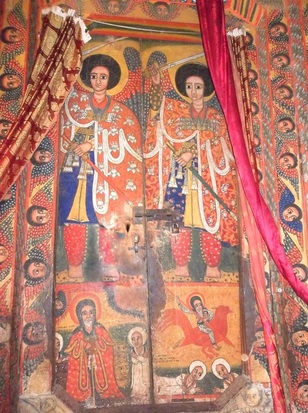
Lake Tana Monastery - Bahir Dar, Ethiopia
OMAN
Our visit to Oman was one of tremendous appreciation both for the kindness and hospitality of the Omani people - and for the far reaching
wisdom of the Sultanate
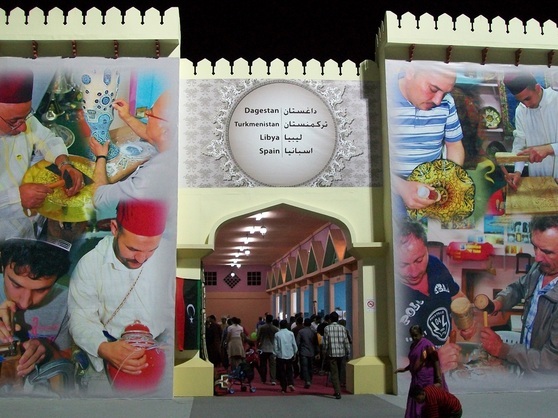
International Festival of Handicrafts - Muscat, Oman
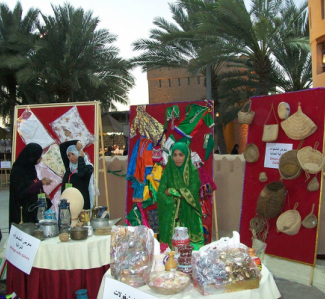
The second adjoining “Festival of Omani Heritage” was an
impressive celebration the traditional arts, crafts, music and food
of the people of Oman in a constructed village and desert
setting, much like a “theme park,” within the enormous Muscat
park grounds. Both festivals were so much in keeping with
Embrace values, that we only wish we had a week to explore
every performance, demonstration and vendor.
Young Exhibitor at the Omani Heritage Festival - Muscat, Oman
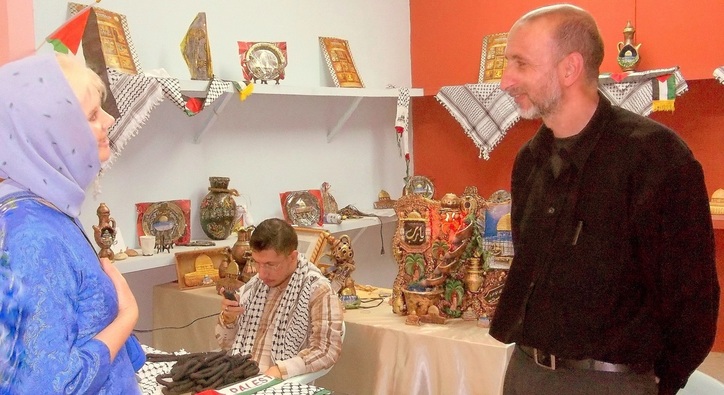
Bader Alaour Altamimi of the Palestinian Traditional Handicrafts Center - Hebron, Palestine with Virginia
In Oman Ajata and Virginia also took photos of the pilgrimage places of the Dargha (tomb) of Nabi Ayyub (Job of the Bible), the Dargha (tomb)
of Nabi Umran (Imran-according to the Qur’an Father of Mary -Mother of Jesus) and the imprints frozen in rock of Nabi Salih’s “she camel”
mentioned numerous times in the Qur’an.
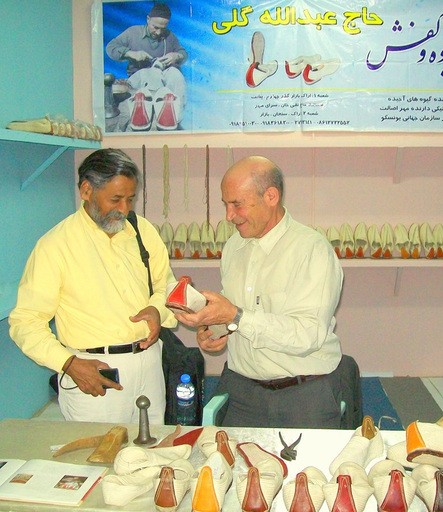
Traditional Iranian Artisan, Abollah Goleh Senejani -from Arak, Iran with Ajata
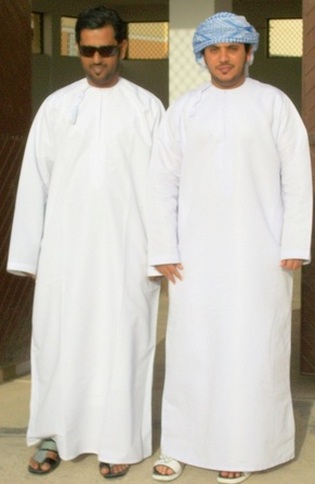
While in Salalah, Ajata and Virgina were having a difficult time
finding any of the shrines connected iwth Nabi Salah. Shah
Almadar, from the front desk of our hotel told our problem to two
of his other guests, Salim & Hamed - Omanis on their way to a
double wedding in Yeman. When they heard our problem, they
greeted us in the lobby and offered to take us to the pilgrimage
place connected with Nabi Salah's camel. They also took us in
search of a sufi sheikh, an ancient cemetary and bought us our
first goat milk tea and a local delicacy - a crepe filled with egg,
honey and cheese.
Hamed and Salim - Our Gracious & Hospitable Omani Friends
Oman has a very large population of both Hindus and Muslims from the Indian subcontinent. Many families from the South of India began trading
and living in Oman centuries ago. For a considerable number of the Muslims from the subcontinent, the tomb of Nabi Umran (according to the
Qur'an is the Father of Mary, Mother of Jesus) is very special. They watch over it and spend a great deal of time there. It was touching
therefore, that despite the fact that women are not usually allowed inside, Virginia was graciously received.
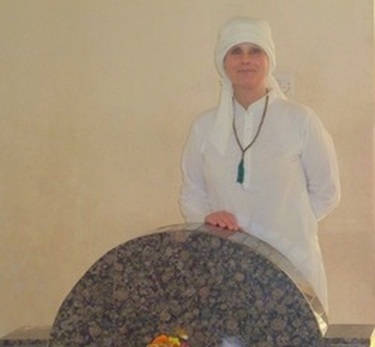
Virginia at Nabi Umran's Shrine - Salalah, Oman
UAE
The United Arab Emirates came as a total surprise. We were not prepared for the large population of ex-patriots from around the world,
including many British and large numbers of both workers and businessmen from the Indian subcontinent. In comparison, Gulf Arabs are rarely
to be seen on the streets. The buildings in Dubai are particularly enormous. The average high rise is about 3 times the width of a New York
skyscraper and just as tall. Perhaps the expense of real estate makes large mosques in the downtown area unrealistic but mosques of grand
stature are few and far between. The charming aspect of the modern Dubai is its’ international sophistication and acceptance of many
traditions.
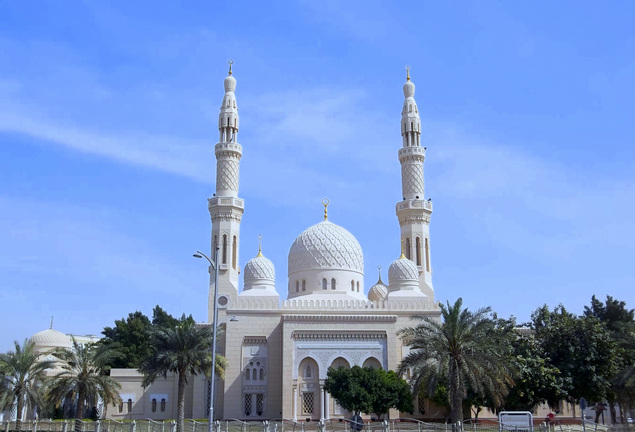
The Jumairah Mosque, Dubai, U.A.E

There are reputedly over 60 Christian churches, 2 - 4 Hindu temples and one shared
Hindu Temple / Sikh Gurdwara collaboration which the founders particularly enjoyed
visiting.
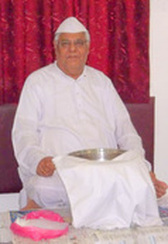
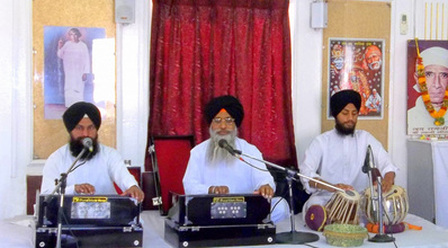
Shared Hindu Temple & Sikh Gurdwara - Dubai, UAE
Dubai is without a doubt developing into a flamboyant and unequivocally international city. However in contradistinction, Abu Dhabi’s Masdar
City is being designed and funded (22 billion dollars) by the courageous and visionary Emirates to operate entirely on renewable energy.
By 2016 Masdar City is to be a new urban prototype for the future of humankind.
There is precious little updated information available in travel guides with regard to any of the countries of the Middle East or Ethiopia. For those
interested in traveling to the above countries, we are adding some pertinent notes and many more photos in our CELEBRATING HUMANITY
section.
Photos from all the above mentioned countries will be added to our EMBRACE SACRED PLACES.ORG website for free download.